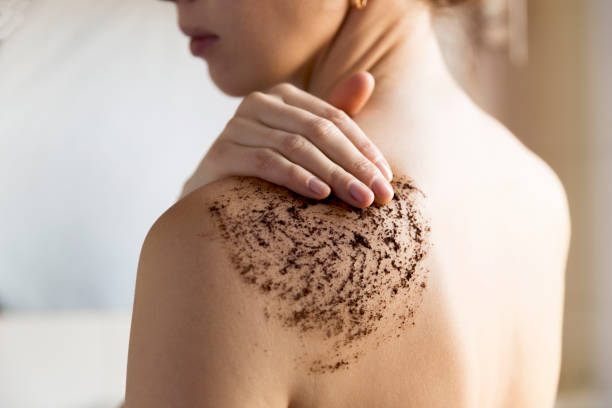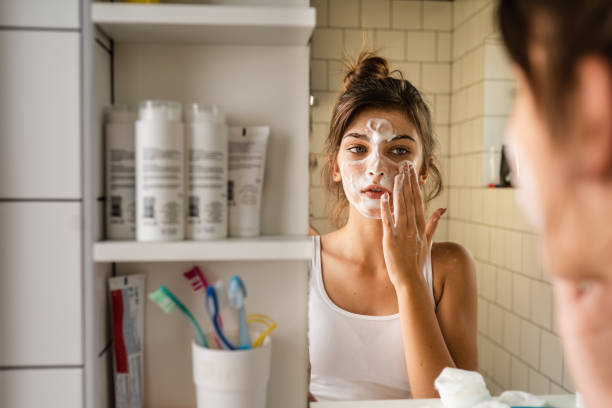How often should you exfoliate your skin? This is a common question with a not-so-simple answer. The frequency of skin exfoliation largely depends on your skin type, the products you use, and even the time of year. Exfoliating helps to remove dead skin cells, unclog pores, and promote cell turnover, leading to clearer, more radiant skin. However, overdoing it can lead to irritation, sensitivity, and other skin issues. The key is to find a balanced routine that works for your unique skin needs.
Understanding Skin Types and Exfoliation Needs

Determining your skin type is the first step in establishing an effective exfoliation routine. People with oily skin may tolerate more frequent exfoliation compared to those with dry or sensitive skin. Normal skin types generally have a bit more flexibility but should still be cautious. Combination skin requires a careful approach to avoid over-exfoliating oily areas while properly treating drier zones. Finally, sensitive skin must be treated with the gentlest exfoliants and infrequent applications to avoid irritation.
Exfoliation Frequency: How Much Is Too Much?

General guidelines suggest that exfoliating 2-3 times per week is sufficient for most skin types. If you’re using a chemical exfoliant with active ingredients such as AHAs or BHAs, you might reduce frequency to once a week, especially for sensitive skin. Signs of over-exfoliation include redness, a burning sensation, increased sensitivity, and dry, flaky patches. It’s imperative to monitor how your skin reacts after each exfoliation session and adjust accordingly.
Tailoring Your Exfoliation Routine
Customizing your exfoliation practice is essential to maximize benefits while minimizing potential harm. Here, we’ll break down routine adjustments by skin type:
- Sensitive Skin:
Stick to gentle exfoliants like lactic acid or ultra-fine scrubs, and limit exfoliation to once a week. - Oily and Combination Skin:
Can often handle more frequent exfoliation, such as 2-3 times weekly, using salicylic acid or similar ingredients. - Dry and Normal Skin:
Ideal to exfoliate with moisturizing elements like glycolic acid, aiming for 1-2 times a week to avoid dryness.
Choosing the Right Exfoliation Method
The debate between physical and chemical exfoliants is ongoing, but the choice often comes down to personal preference and skin type. Physical exfoliants work by manually removing dead cells, while chemical exfoliants dissolve the bonds between skin cells. Both methods can be effective when used correctly. It is crucial, however, to not mix different types of exfoliants excessively, as this can lead to over-exfoliation.
The Best Time to Exfoliate
Your skin’s needs can change based on the time of the day and even the season. Generally, nighttime is the ideal moment for exfoliation due to the skin repair process that happens while we sleep. Additionally, exfoliating at night can prevent the potential for sun sensitivity, which is especially a concern with certain chemical exfoliants.
Pre-Exfoliation Preparation Tips
Preparing your skin for exfoliation is vital for the treatment’s effectiveness and for safeguarding your skin. You should start with a clean canvas by gently washing your face, ensuring all makeup and debris are removed. Steaming the skin or using a warm compress can also open pores and make the exfoliation process more efficient.
Post-Exfoliation Skin Care
After exfoliation, it’s essential to follow up with a focussed post-care routine. Moisturizing helps to soothe the skin and lock in hydration. If you exfoliated during the day, applying a broad-spectrum sunscreen is non-negotiable, as newly revealed skin is delicate and more susceptible to UV damage.
Professional Exfoliation Treatments
Professional exfoliation treatments are designed to remove dead skin cells, promote cell renewal, and enhance skin texture and appearance. These treatments are performed by skilled aestheticians or dermatologists and can be tailored to suit different skin types and concerns. Below is a table outlining some of the most common professional exfoliation treatments available:
| Treatment Type | Description | Suitable Skin Types |
|---|---|---|
| Chemical Peels | Uses acids at varying strengths to remove the outer layer of dead skin, revealing smoother, more radiant skin underneath. | Sensitive to Normal |
| Microdermabrasion | Utilizes a device to sand away the top layer of skin, reducing the appearance of scars, wrinkles, and pigmentation issues. | Normal to Oily |
| Dermaplaning | A scalpel is used to scrape off the top layer of dead skin along with fine hairs for a smooth, bright complexion. | All Types, especially Dry |
| Hydrafacial | Combines exfoliation with hydrating serums to cleanse, extract, and hydrate the skin, suitable for regular maintenance. | All Types |
Conclusion
In conclusion, how often you should exfoliate your skin is not a one-size-fits-all answer. It depends on a variety of factors, including your skin type, the products used, and environmental influences. Remember to start slowly with any new exfoliation treatment, monitor your skin’s response, and adjust as necessary. Listening to your skin is the best practice for maintaining a healthy and glowing complexion.
FAQs
| Question | Answer |
|---|---|
| Can exfoliating too often damage my skin? | Yes, too frequent exfoliation can strip the skin of essential oils and lead to irritation and sensitivity. It is vital to adhere to recommended guidelines and be mindful of how your skin reacts. |
| How do I know if I’m not exfoliating enough? | If your skin appears dull, flaky, or congested, you may need to increase the frequency of exfoliation. A balanced routine is crucial for maintaining a clear and luminous complexion. |
| Can all skin types use chemical exfoliants? | Most skin types can benefit from chemical exfoliants when the correct type and concentration are used. Always opt for milder formulations if you have sensitive skin, and gradually work your way up if needed. |
| Should I exfoliate in the morning or evening? | Exfoliating in the evening is generally preferred. Night-time application followed by morning sunscreen application helps to protect the skin from increased sun sensitivity due to certain exfoliants. |
| How should I exfoliate if I have acne-prone skin? | For acne-prone skin, gentle chemical exfoliants like salicylic acid can be beneficial. Avoid over-exfoliating, as it can worsen acne. Start with low concentrations and increase as tolerated, always consult a dermatologist if unsure. |




